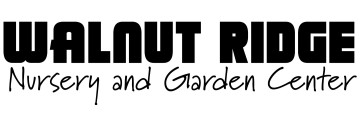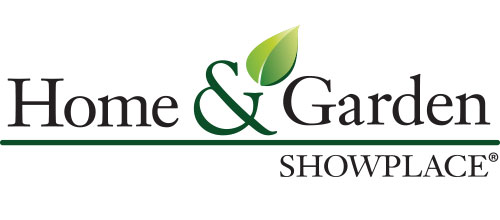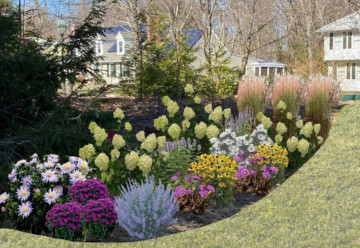
Flowers and Feeders for Hummingbirds, Butterflies and Other Garden Pollinators
Flowers and Feeders for Butterflies, Hummingbirds and Other Pollinators
Why plant flowers and fill feeders for butterflies and hummingbirds? They are not only pretty, but also pretty important as powerful pollinators! According to the U.S. Department of Agriculture on the topic, pollinators are responsible for growth of 90% of flowering plants and one third of our food crops. Including butterflies, hummingbirds, bees, moths, beetles and bats, abundant diversity of pollinators improves abundant diversity, volume, size, beauty and quality of plant life. In fact, The U.S. Fish and Wildlife Service requests support in feeding pollinators, so if you’d like to help … let’s get buzzy!
Flower Power: General Tips for Flowering Plants that Attract Pollinators.
Depending on what you’re trying to attract, some flowers are more effective than others, but here are some initial rules of thumb for attracting and nourishing all pollinators in general.

- Use diversity of color and species, which is more ‘attractive’ to butterflies and hummingbirds than just one type of flower. Assisting the eyesight is one factor, but also, would you rather go to a buffet or a table full of one food? Variety in color and type of natural food is universally healthy as well as appealing.
- Place the flowering plants in bunches or groups, so that each is recognizable as a patch of its type (i.e., butterfly bushes with butterfly bushes, and zinnias with zinnias).
- Almost all pollinator plants are best in full sun or at least partial sun, and the insects (especially butterflies, moths and bees) likewise prefer feeding in the full sun. Some structure to buffer the wind would also help feeding.
- Use plants native to the area. Not only will the plants naturally thrive better, but they are more recognizable to the local pollinators. Remember, hummingbirds return to the same nesting area every Spring, so give them some natural diet that they recognize (in addition to hanging feeders).
Attracting and Nourishing Butterflies and Hummingbirds

Not that we don’t care about moths, bees, beetles and bats as important to biodiversity and plant life, but we tend to focus on butterflies and hummingbirds when purposefully attracting pollinators for natural beauty as well as aerobatic amazement. Here are a few tips for each, followed by a list of locally native flowers that attract butterflies and hummingbirds alike.
Attracting and Feeding Hummingbirds
Getting the hummingbirds to come to your yard, nest nearby, amaze you with their maneuvers, and stay for the summer … isn’t very difficult. They are definitely attracted to pollinator plants and hummingbird feeders, but there are key facts and tips that help to know.
- Timing
Timeframe is important, especially to attract hummingbirds in their migration North. They migrate north from South America in the early Spring, about the time of Easter, and they stay in this area (Kentucky and Southern Indiana) through September, into October. The hummingbirds who go further North have to come back through when they migrate South in the Fall, so they will stop and feed when “your” hummingbirds have already left. They generally return to the same spots, but some hummingbirds are in their first migration, so they may decide to make your home … their home.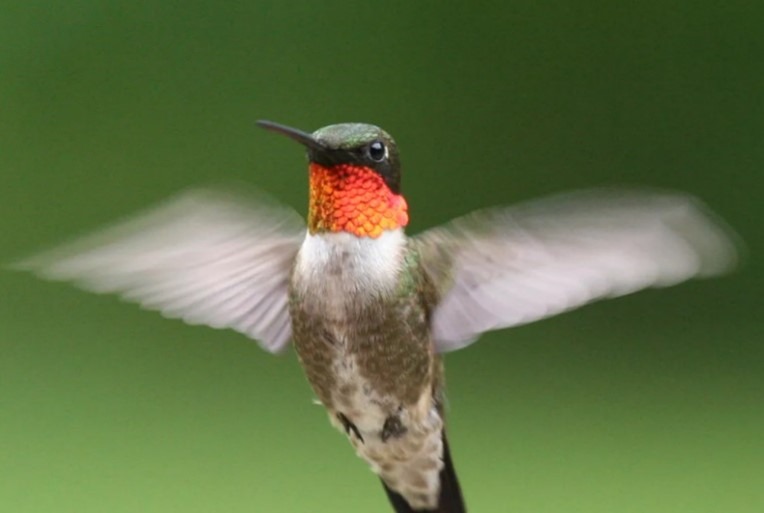
- Hang Feeders, be Patient
Around Easter, hang a hummingbird feeder (or two or three), as it won’t yet be time for pollinator flowers, and hummingbirds recognize feeders. Hang them at least 50 feet from human activity, so the hummingbirds aren’t threatened at first. (They will then get accustomed to you, and even feed out of your hand toward the middle and end of Summer.) If the nectar gets cloudy and sour before you see them feeding and flying, just refill and be patient. Once the hummingbirds do arrive, they are busy nesting, so they may not be feeding heavily at first. Again, just refill if the nectar goes sour before the hummingbirds can finish it.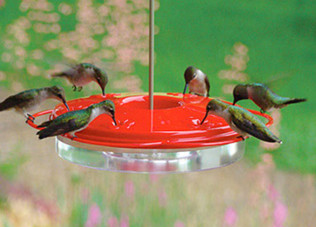
- Homemade Hummingbird Nectar
Hummingbird nectar is easy to make: 4-to-1, water-to-sugar solution. Use warm water and swirl-mix the solution until you see the sugar dissolve. Any standard hummingbird feeder will do. They are generally red, which reliably attracts hummingbirds, but they like other colors, too.
- Add Flowers, Leave the Webs
Adding flowers in a nectar garden helps to round out their diet and add to the appeal of the home. Hummingbirds favor tubular and cone-shaped flowers for their ability to hold lots of nectar. They also LOVE tiny insects and depend on them for protein! So, leave any spider webs you see in the garden.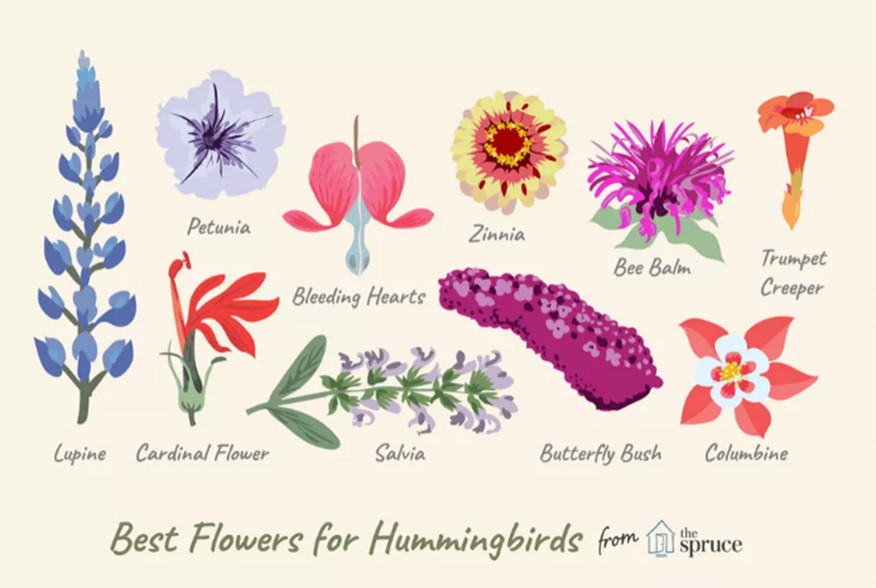
- Enjoy the Air Shows Through Fall
Hummingbirds will then feed regularly into the Summer, establish their territory, and guard “their” feeder. If you see hummingbirds fighting over the feeder, don’t worry. Enjoy the air shows, and add feeders at distances from each other, to help multiple hummers establish territory. Their most active time is in the Fall, as they are feeding heavily to build up energy and fat for the long migration back to Costa Rica, sometimes into late October for this area.
Attracting and Feeding Butterflies
First things first about Butterflies. They begin as caterpillars. We know that you know this, but have you thought about it in terms of attracting butterflies and keeping them around?
- First … Caterpillar Food!
To attract and keep butterflies, offer the types of plants they love for laying eggs. The eggs hatch into larvae, and the growing caterpillars need their food of choice to grow and prepare for cocooning. Milkweed is a favorite among butterflies for caterpillar food. In fact, did you know that Monarch caterpillars will ONLY eat milkweed, and that they are also called “The Milkweed Butterfly”? So, if you want to attract Monarchs … Got Milkweed?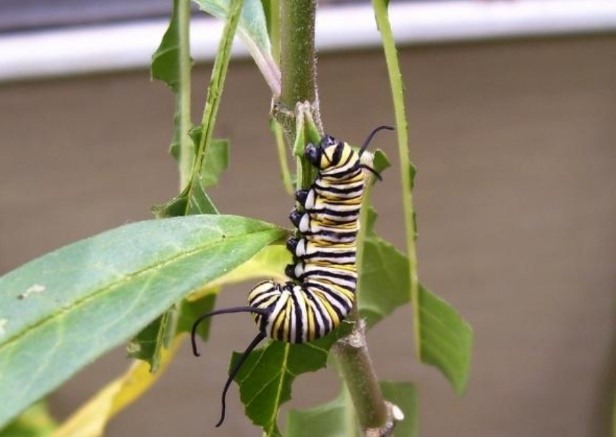
- Location, Location, Location
Butterflies like sunny, open spaces with fresh water nearby. So, birdbaths are helpful. Also, butterflies aren’t big fans of being blown around by wind when they’re feeding. A patch of butterfly bushes and other favorite nectar sources are therefore best next to a structure or trees and shrubs that block the wind.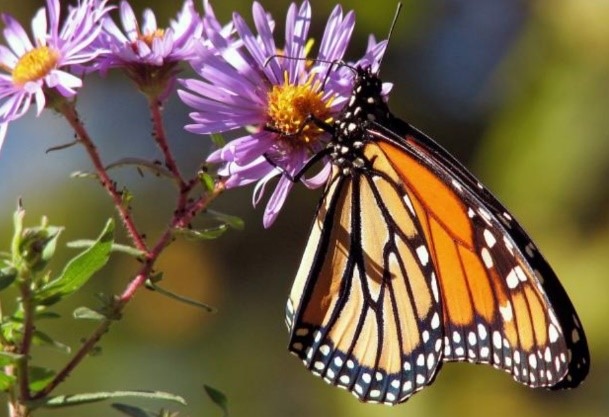
- Go Native with Variety
As mentioned earlier, diversity of color among native nectar plants is all it takes for butterflies. So, feel free to choose the colors you like, and enjoy the floating, carefree beauty of your new butterfly guests!
Butterfly and Hummingbird Plants Native to Kentucky and Southern Indiana
Finally, here are some specific pollinator plants native to the Kentuckiana area, including some water plants for ponds and water features. Enjoy!
Aruncus dioicus (bride's feathers)
Asclepias tuberosa (butterfly milkweed)
Helianthus decapetalus (thinleaf sunflower)
Lupinus perennis (sundial lupine)
Rudbeckia hirta var. pulcherrima (blackeyed Susan)
Symphyotrichum undulatum (wavyleaf aster)
Cephalanthus occidentalis (common buttonbush)
Viburnum acerifolium (mapleleaf viburnum)
Echinacea purpurea (eastern purple coneflower)
Lobelia cardinalis (cardinalflower)
Monarda didyma (scarlet beebalm)
Lonicera sempervirens (trumpet honeysuckle)
Water Plants for Kentucky and Southern Indiana
Equisetum arvense (field horsetail)
Equisetum hyemale var. affine (scouringrush horsetail)
Nymphaea odorata (American white waterlily)
There are so many opportunities to attract butterflies, hummingbirds and other pollinators with plants and feeders that are also attractive to you! Contact us at Walnut Ridge, or come on by. We will be very happy to help you design your own pollinator patch, so you can enjoy the beauty of your garden and what it attracts!
